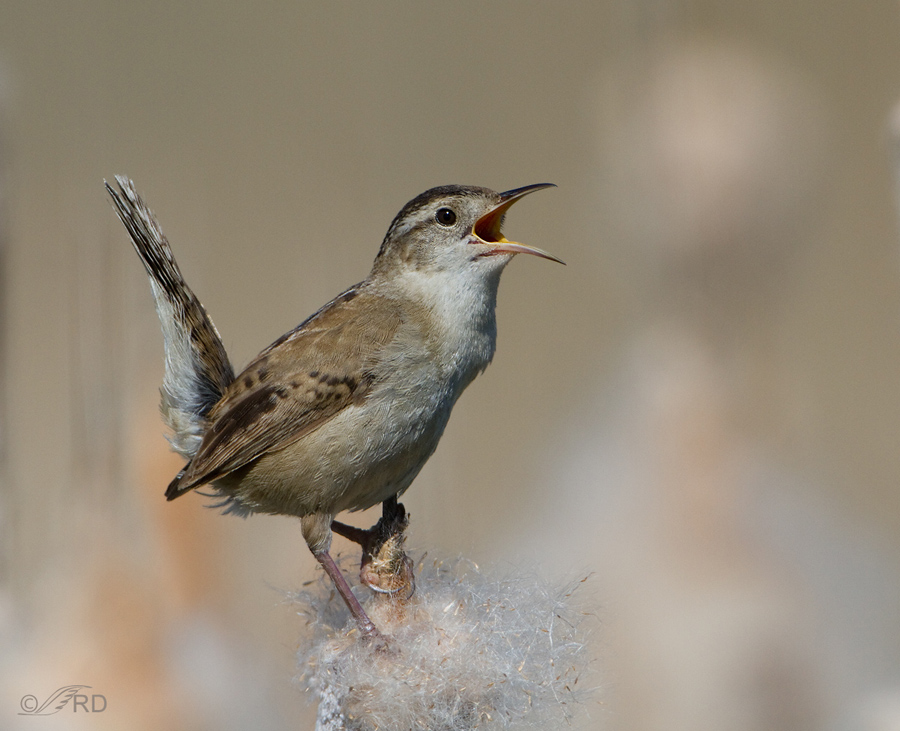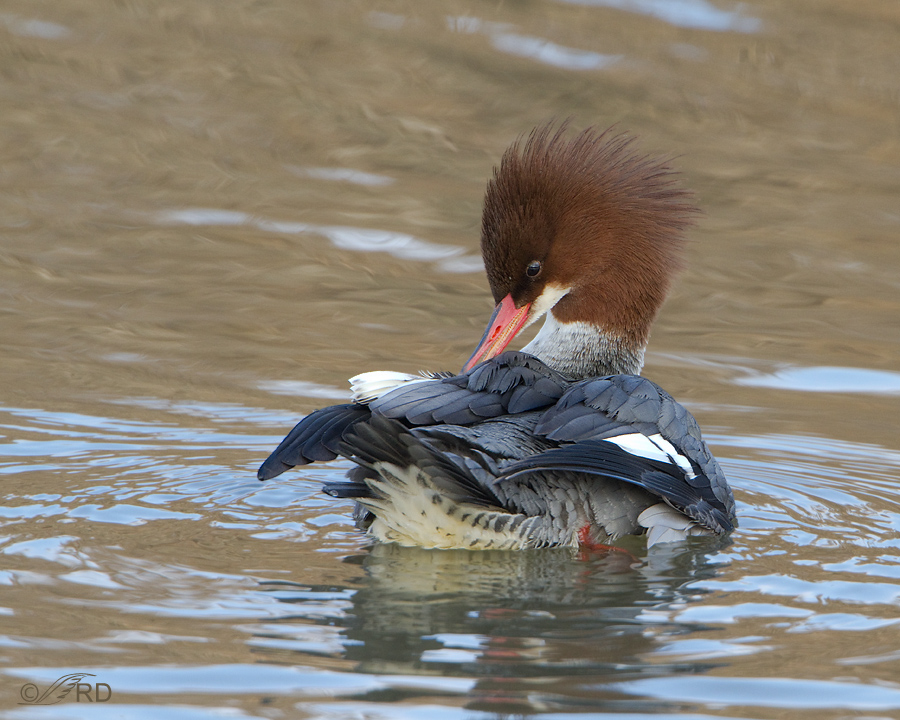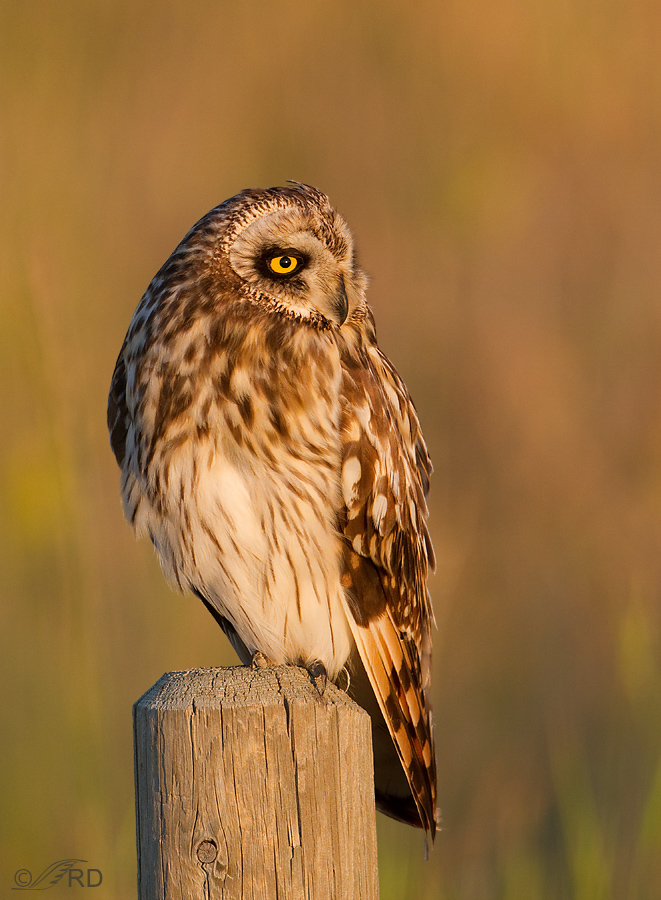Baiting just may be the most hotly debated topic in the bird photography community. Part of that debate revolves around the fact that not all nature photographers agree on a precise definition for the term. I’ve followed and participated in discussions of this “hot topic” in nature photography discussion forums for years now and it seems that the most mainstream definition, the one that the vast majority of avian photographers subscribe to, is a version of this: baiting – using food or other items or methods to artificially lure birds in close to the photograpaher. This would include using recorded bird calls, “setups”, back yard bird feeders, stuffed raptors (many birds come in to “mob” raptors) and a variety of other ingenious methods used by some well known “nature” photographers.
One of the most controversial forms of baiting is using live bait (often pet store mice) to bring in raptors – owls in particular. This practice can have many negative efffects on the birds – from making them dependent on an artifical food source to spreading disease to causing birds to be hit by cars – not to mention the ethical dilemma of “nature” photographers photographing birds in unnatural situations.
To bait or not to bait is an ethical decision that virtually every bird photographer must make. For me that decision was easy – I do not bait my intended subjects. I do sometimes photograph birds at my back yard feeder simply for the practice but I don’t post those images on online forums, include them on my website or blog or offer them for sale. To me, baited shots approach studio or zoo photography and are not nature photography.
Ok, to the point of this blog. Earlier this spring I recieved a very unpleasant email from a “lurker” (someone who occasionally comments on the images of others but doesn’t post his own images or join the forum) on an online nature photography critique forum that I regularly post to. I’ll hereafter refer to this person as “Fred” (not his real name). His email was in response to the photo below, which I had posted on that forum for critique.
Canon 7D, 1/2000, f/8, ISO 400, EV -0.33, 500 f/4, 1.4 tc
When I posted the image I stated, as I always do, that the bird was “not set up or baited” and that the photo was taken at Bear River Migratory Bird Refuge. In his email to me Fred accused me of being either “naive” or “intentionally misleading” because I had claimed that the wren had not been baited, as it is his contention that “any creature photographed at any wildlife refuge is by definition baited” since there has obviously been “massive habitat alteration to bring in the various creatures”. He also said that I “demeaned my work” by claiming that photos taken at refuges were not baited.
I disagree.
Canon 7D, 1/400, f/7.1, ISO 640, EV +0.33, 500 f/4, 1.4 tc
This merganser image was taken at a local bird refuge. Mergansers are fish eaters. Ironically, this refuge goes to great effort to eradicate the invasive carp that these birds eat because the fish do so much damage to emergent vegetation needed for waterfowl habitat. So, was the bird baited, based on the most commonly accepted definition of the term? I don’t think so.
Canon 7D, 1/2500, f/6.3, ISO 320, EV +0.00, 500 f/4, 1.4 tc
I took this image of a Red-breasted Merganser at a suburban fishing pond just below my home. Obviously the merganser was on the pond because of the fish provided by the DNR and there has been habitat alteration to provide the pond in the first place. Was I being naive or intentionally misleading when I didn’t say the bird was baited when I posted the shot? In my opinion, definitely not.
Canon 7D, 1/400, f/8, ISO 500, EV +0.33, 500 f/4, 1.4 tc
One final example. I took this shot last week in NW Montana. This Short-eared Owl is living on a section of land that has been placed in the Conservation Reserve Program (CRP) – where farmland is taken out of production and allowed to revert to a natural state in an effort to reduce erosion, improve river quality and provide wildlife habitat. Would Fred say this shot was baited because the land was allowed to go wild in a deliberate attempt to attract and support wildlife? I don’t know what he would say (and don’t care to find out) but I hope I’ve made my point. A precise definition of baiting that works for everyone is likely unobtainable. The best that we can do is use the mainstream definition accepted by most nature photographers and be honest about how we’ve obtained the shot.
Fred and a few others are entitled to what I consider to be an extremist definition of baiting but I resent his accusation that I am naive on the subject or have been intentionally misleading others by my “not baited” claim on my posts. Any reasonable person knows what I have and haven’t done to get the image when I say “not baited”, especially when I indicate that the shot was taken at a refuge.
Ok, I’ll get off the soap box now but it does feel good to finally get this off my chest. A catharsis of sorts…
Ron
PS – I haven’t made a blog post for a while because I’ve been on an extended camping/photo trip to western Montana. Now that I’m home again and mostly caught up with the backlog of chores that accumulated in my absence I’ll be more diligent with my blog posts.






I would think that in the context of wildlife photography ‘baiting’ applies when the change to the environment has been brought about just to get the opportunity for otherwise challenging shots. So, for what it is worth (not a lot) I agree with you.
I am so grateful that worlwide refuges and conservation areas are becoming increasingly common.
And I love these photos. Birds are one of my passions. We feed them at home – seeds and fruit that are naturally available to them, and they are a source of never ending joy. Thank you for showing me birds I will probably never see for myself.